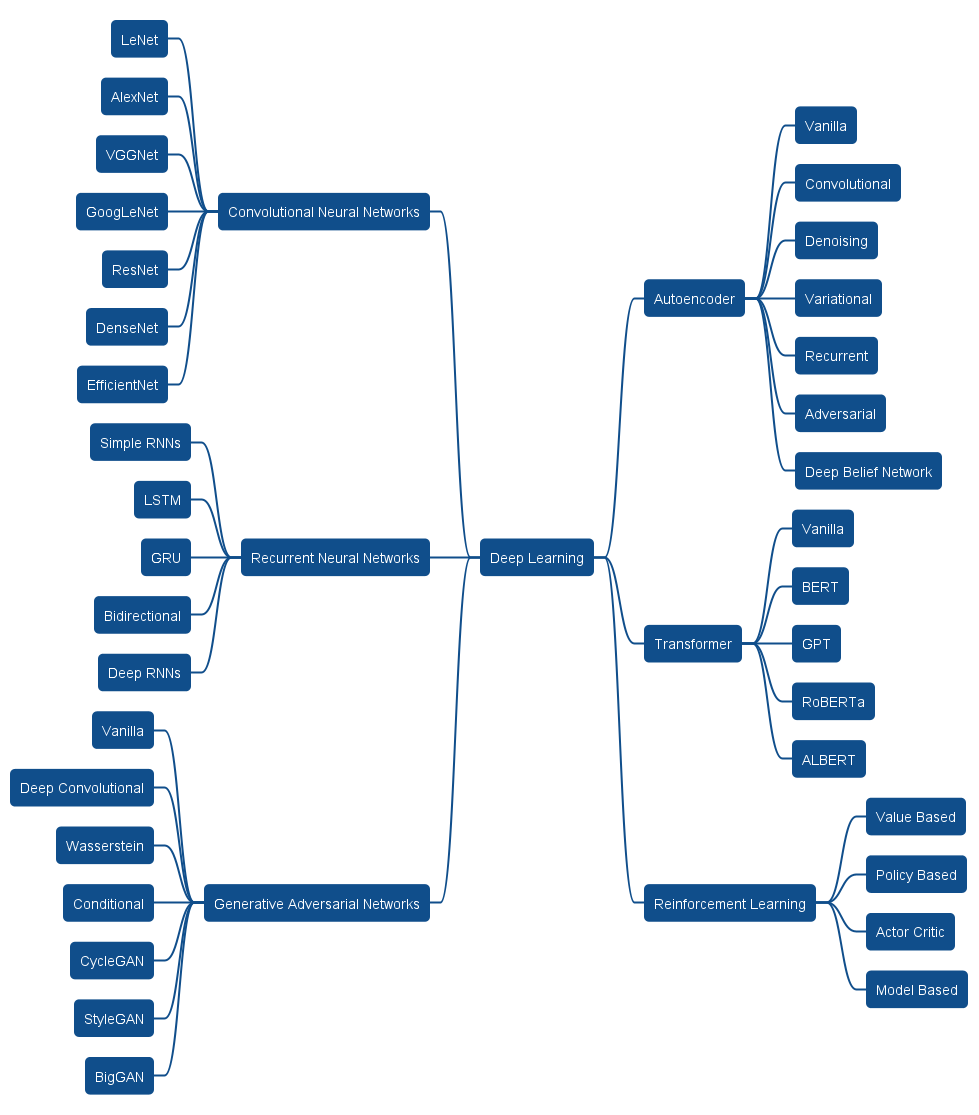Introduction
Deep learning is a subset of machine learning that is concerned with creating artificial neural networks that are capable of solving complex problems. These neural networks are modeled after the way the human brain works, with multiple layers of interconnected nodes, or neurons, that process and transmit information. The term "deep" in deep learning refers to the fact that these neural networks have many layers, allowing them to learn and extract features from data at multiple levels of abstraction.
Deep Learning is primarily a type of supervised learning, although it can also be used in unsupervised, semi-supervised or reinforcement Learning.
Deep learning has become a powerful tool for a wide range of applications, from image and speech recognition to natural language processing and even self-driving cars. It has been used to improve the performance of existing machine learning algorithms and to develop new ones that can tackle previously unsolvable problems.
In this chapter, we will explore the fundamentals of deep learning, including the types of neural networks and the algorithms that are used to train them. We will also discuss some of the key challenges and considerations when working with deep learning, such as data preprocessing, overfitting, and interpretability. Additionally, we will review some real- world applications of deep learning and the impact it has on various industries.
The main subfields of deep learning include:
- Convolutional Neural Networks (CNNs): These are neural networks that are specifically designed to process and analyze images and videos. They are widely used in computer vision tasks such as image classification, object detection, and image generation.
- Recurrent Neural Networks (RNNs): These are neural networks that are designed to process sequential data, such as time series, speech, and text. They are widely used in natural language processing tasks such as language translation, text generation, and sentiment analysis.
- Generative Adversarial Networks (GANs): These are neural networks that are used to generate new, previously unseen data that is similar to a given dataset. They are widely used in image and video generation, style transfer and data augmentation
- Autoencoder: Autoencoder is a type of neural network that is trained to reconstruct its inputs. They are used for dimensionality reduction and feature learning.
- Transformer: These are neural networks that are designed to process sequential data and can be used for language understanding and generation tasks such as language model, machine translation, and text summarization.
- Reinforcement Learning: This is a subfield of deep learning that involves training agents to make decisions based on their environment and learn from the feedback, this is widely used in gaming and robotics.
These are some of the main subfields of deep learning, but there are many other specialized architectures and techniques that are being developed and researched.
The following table shows different deep learning methods and their respective applications. Each method has a particular set of strengths that make it better suited to a particular task. By understanding these applications, we can use these methods to create more accurate and efficient models.
| Method | Application |
|---|---|
| Convolutional Neural Networks (CNNs) | Computer vision, image recognition |
| Recurrent Neural Networks (RNNs) | Natural language processing, speech recognition |
| Generative Adversarial Networks (GANs) | Image generation, video generation, text generation |
| Autoencoder | Image or data compression, anomaly detection |
| Transformer | Natural language processing, language translation |
| Reinforcement Learning | Game playing, robotics, autonomous vehicle navigation |
Table: Deep Learning Methods Applications
The figure [Deep Learning Overview] illustrates the different types of deep learning models that are commonly used in various applications.
